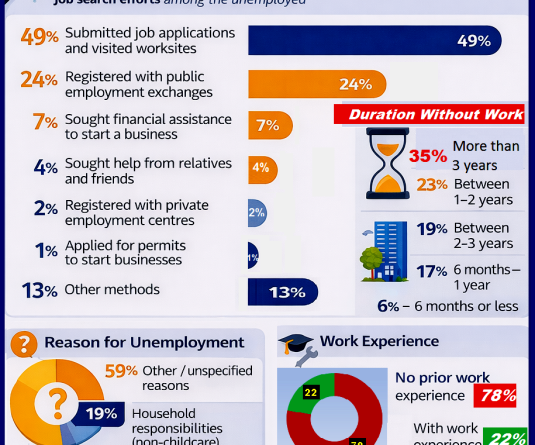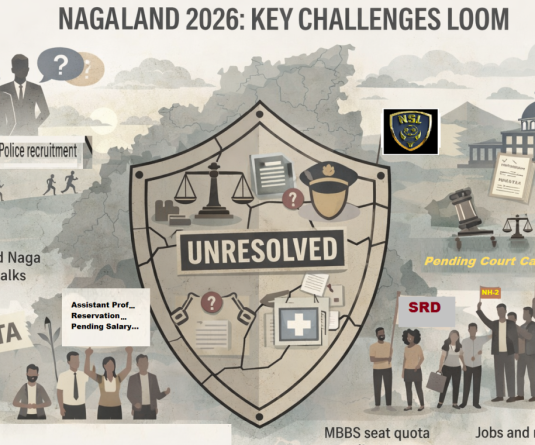
Morung Express News
Kohima | May 16
It was on May 16, 1951 day, the Naga National Council (NNC) conducted a plebiscite under the leadership of AZ Phizo which went on to be known as the Naga Plebiscite.
'The Naga Plebiscite Commission has described the Plebiscite as the “finest democratic expression” of the collective political will exercised by the Naga people— “The clearest statement that Nagas have the political consciousness to organise themselves as a people and a nation.
Against the backdrop of the commemoration of the 75th Naga Plebiscite Day at Khouciezie (Local ground, Kohima) on May 16, The Morung Express spoke to Niketu Iralu, a peace activist, Sano Vamuzo, a social activist and Rev Dr Wati Aier, Convenor of the Forum for Naga Reconciliation, who shared their reflections on the significance and legacy of the plebiscite.
Significance of the 1951 Plebiscite
“The significance of the 1951 Naga Plebiscite for the Naga people was that their leaders of the day made it abundantly clear to the new India the British Empire had created, and left, that the facts of modern Naga history fully justified the Naga people's right to call themselves a nation,” Niketu Iralu. The Plebiscite, he maintained reaffirmed the unambiguous position the Nagas took in their Memorandum to the British Simon Commission and the Declaration of Independence, 18 years later on August 14, 1947, reaffirmed the memorandum. “The Plebiscite was conducted to make the historical, political, and legal facts abundantly clear to India and the world,” held Iralu.
Describing it as an abiding historic event for the Naga nations (tribes), Rev Dr Wati Aier termed the Plebiscite as a ‘referendum’ in which the Naga population advocated sovereignty.
Aier also reminded that on this historic occasion, Naga people must acknowledge the NNC for their imaginative wisdom.
“The significance of the 1951 Naga Plebiscite is that it was the unanimous announcement of the Nagas’ aspiration for self determination,” said Sano Vamuzo.
Shaping aspirations
According to Dr Aier, the plebiscite solidified the position of the Nagas on sovereignty with “high definition” asserting the distinct Naga political identity.
“Plebiscite is the ground of Naga resistance, birthing national consciousness and evolving political ecology for self-determination,” he said.
For Vamuzo, the Plebiscite shaped the course of Naga political identity by becoming the basis of the political aspiration of the Nagas.
For Iralu, the Plebiscite showed the extent to which the Naga people had claimed ownership of the identity, and the struggle launched by their leaders had evolved for all Nagas.
“The price Nagas have paid to uphold their right they claimed in the Plebiscite up to today has shown how much the Plebiscite with thumb impression has shaped our understanding of our aspiration for our identity,” maintained Iralu.
The legacy
While stating that the legacy of the Plebiscite was rooted in the political stand the Nagas asserted in the Memorandum to the Simon Commission and reaffirmed on August 14, 1947, Iralu however, noted that the “massive and prolonged” use of overwhelming force by the Government of India has produced a self destructive “overground and underground” divide today.
“We must now discern the wisdom to help one another to heal and restore the health of our society for the sake of the coming generations,” said Iralu.
“Without much doubt, the legacy of the Plebiscite lies at the heart of Naga political movement— a living spirit serving as the moral strength and the original signature of the Naga belonging,” stated Dr Aier and emphasised that this should continue to shape political talks with the GoI democratically towards a win-win outcome.
Regardless of the differences, Vamuzo said that the legacy of the plebiscite remains an “undisputed” testimony of the Naga aspiration.
“Every genuine patriot knows that this is the basis of the Naga political movement, where 99.9% of Nagas expressed their common desire to be a free nation. It is this that should inspire unity among the divided Naga family,” she stated.
As inspiration
While most of the younger generation may have lost track of its history, Iralu added, “If today’s generation can decide to be responsible for what their society needs to do for their children’s tomorrow, they will find the legacy of the 1951 Plebiscite to be something fascinating and exciting.”
Despite the tribal differences, Vamuzo expressed that the Nagas share a common goal.
“The historic Naga Plebiscite is an expression, and a demonstration that Nagas are one; it brought Nagas together and expressed their common desire through their thumb impression,” she stated while noting that the sense of unity was so strong at the time.
Meanwhile, Dr Aier opined that the Plebiscite Day should be a pedagogic occasion for the Nagas, particularly for the younger generation to go back to the “Naga Memory,” one that would not be restrictive but would advocate a common belonging to one political history.
“In other words, Nagas must keep moving without leaving. This paradox may very well be the missing dimension of our political imagination,” he said.
Through dialogue
Vamuzo acknowledged the fragmentation in society while attributing it to a lack of maturity in thinking and assessment of issues.
Calling for patience, mutual understanding and the ability to listen to one another, she viewed that “Genuine solution can be brought about through Naga unity first and in asserting our political rights in one voice with the basis of the 1951 Naga Plebiscite.”
Iralu also emphasised on the urgent need for the Nagas “to know ourselves and discover that we are not less than what we have achieved and come to be and build on it to grow properly.”
He also underscored on the importance of self awareness, and also on the needs and aspirations of “our” immediate neighbours in the region to foster shared stability and pave the way for steady development.
“In our pursuit for our legitimate aspirations which is a painful and demanding process we must grasp the reality that India must be the nation the world needs her to be. If India will be less than that, India will end up being unmanageably destructive. We must understand what the consequences of that tragedy will be for the world of which we are a tiny part,” he said.






